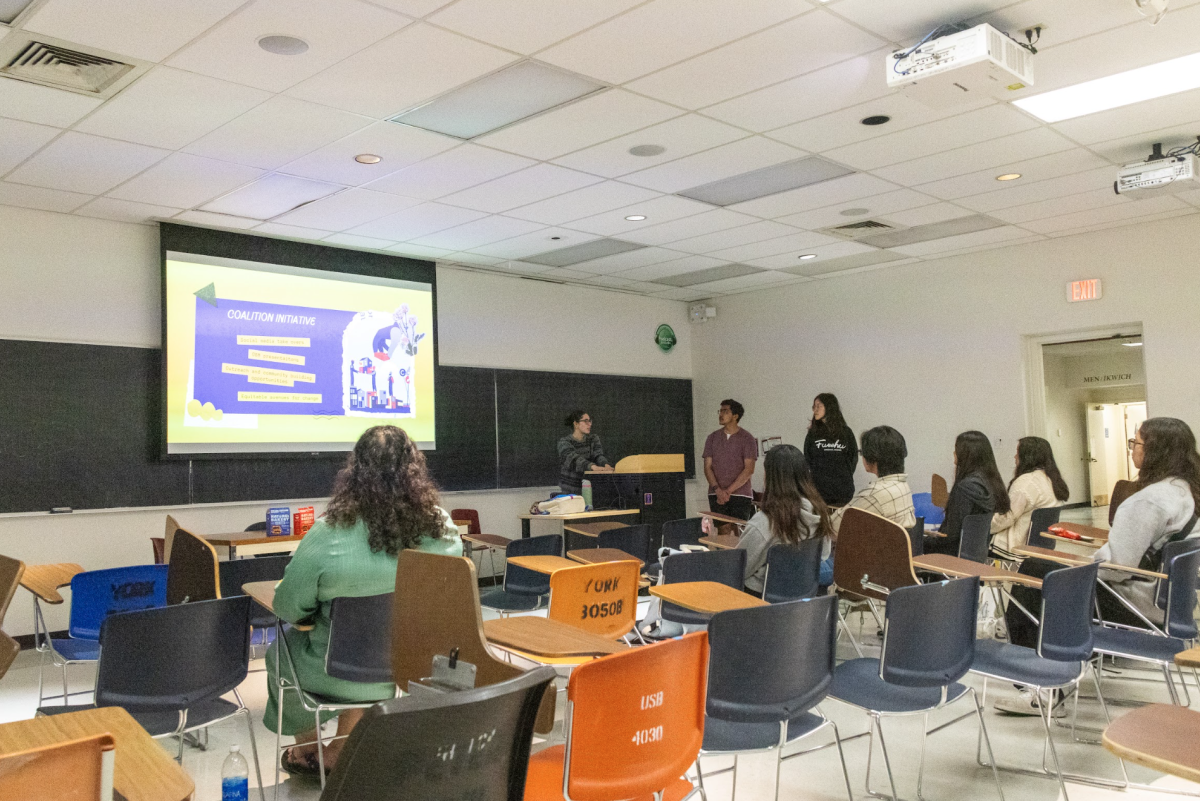Professors and administrators discuss the biggest issues and potential solutions for accommodating the endlessly increasing demand for class enrollment.
UC San Diego’s status as a renowned public research university means there are thousands of students who take classes on campus everyday, not to mention the thousands more who apply and wish to attend every fall. Having such a large population means a welcome diversity in academic fields, backgrounds, and strengths of the members of the student body. Unfortunately, it also means that it can be difficult for students to get the classes they want at a time that works best with their schedules — or to get classes that they want, period. The issue affects the order of classes in which students fulfill the requirements for their majors, whether they can meet their graduation dates, and even their future employment or graduate school plans.
The problem exists because of the competing priorities of students and faculty and because the campus is unable to physically accommodate the amount of classes the students require, explained Dawn Parker, instructional services manager for Undergraduate Services in the Division of Biological Sciences.
“We try to make it as close to perfect as we can,” Parker said. “But it never comes together for every person. [There are] not enough classrooms and time in the day to get every class accommodated in an 8-to-5 time frame.”
The faculty and professors interviewed for this article seemed to agree that there is a shortage in the amount of classrooms on campus to meet the needs of a growing student population. Dr. Laurie Smith, director of undergraduate education for the biology department, has been at UCSD for 20 years and has seen the student population massively increase. With the explosion of enrollment has come the challenge of getting biology classes placed in the classrooms that work for the program.
“That is a process that is controlled by the registrar, and the system that [it uses] is one we don’t really have an impact on. We’re not super happy with it, but it’s constantly under consideration for revision,” Smith said. “We’ve just learned to live with it in order to make our program available to the number of students who want to be in it, but that means the classes are going to be big.”
Though Judy Kim, associate professor of chemistry and biochemistry, acknowledges that the ideal class size varies from student to student, she believes her teaching style is better suited to a smaller class size. Smaller classes mean students are better able to communicate with their professors and feel more confident in making questions and comments.
“I think a balance of quality and quantity is very important. I’ve taught the big courses and the small courses, and I think a lecture of 100 to 200 people is a good size for chemistry, but we don’t have many classrooms of that size,” Kim said. “When we’re scheduling courses, it’s a huge puzzle. I think it would be really helpful to have more medium-sized classrooms. I like a space that is conducive to learning.”
There is another aspect of the enrollment issue that Parker thinks more people should be aware of: the fact that student enrollment behavior is naturally unpredictable. Students are inclined to take a class in a quarter that is taught by an easier professor or offers a more desirable 11 a.m. start time rather than 8 a.m. There are even cases where there is an unexplainable surge in demand. Parker and her colleagues study previous quarters’ data to predict the demand for upcoming courses, but, because of these factors, the trend is not always smooth.
“There are variables that influence student demand for courses that we cannot always foresee,” Parker said. “When there isn’t enough space in required courses, it’s usually because there was more demand than we expected based on what we saw in previous quarters, or we weren’t able to get a classroom as big as we needed, and compromises had to be made.”
“They use historical information to project demand. If they have seats for 300 students in class, they’re shooting for a capacity that matches up with last year’s data,” Smith added. “But if this year, 400 students want to enroll, there’s not much we can do about that. Contracts are in place, and this process starts months earlier.”
Those who choose to postpone a class in the fall to wait for a different professor, location, or time of day will inevitably create a backlog of students for the next quarters, meaning there’s extra space in a fall course that will be packed in the winter.
“Students are smart, and I get that; they want to see who is teaching,” Kim said. “We try to get some uniformity such that it’s not as big of an issue as to who you’re taking the class with. That’s a challenge.”
One of the most important factors in a student’s success in a course is the professor they take it with. Teachers affect how well a student understands material and how much they enjoy the class. Furthermore, they influence how well a student performs in a course.
A student’s GPA and therefore graduate school applications reflect the grade they earned in a class, not the professor who taught them, meaning the luck of the draw leaves much of a grade up to chance. A student putting in half the work of a student who earns a “B” with one professor may end up with an “A” in their respective class. This is why uniformity among classes is so important.
Kim pointed out that the variation in faculty— some specialize in research, others spend more time teaching— means that some are unable to teach certain classes at certain times, further complicating the puzzle. If a well-liked or so-called “easier” teacher takes a quarter off, that results in extra build-up of students waiting to take a course. A better balance of strength in professors is needed.
“We have many different flavors of professors on campus. We need a really good balance of research faculty and teaching faculty,” Kim said. “When I teach my lab course, it takes a lot of time, and I can’t travel that quarter, I can’t tend to my graduate students, and it’s a really big commitment. Not everyone is doing the type of research I do, so there are some people who could do that type of teaching and not have it be as impactful in other parts of their academic career.”
Read More:
Why HDH Does Not Keep its Promises
Sudden Cuts Expose Severe Problems Within UCSD’s Dance Department
CAPS at UCSD: Get Well Soon?
The enrollment system proves to be especially detrimental to international students, whose high school credits aren’t factored into the UCSD system. This means that their enrollment times are very late, limiting their abilities to get the classes they need. Urvashi Jain, a Roger Revelle College junior majoring in mathematics and computer science, thinks that UCSD doesn’t take international students’ previous schooling into account.
“I did all the general education requirements, [like the] science and math courses, during high school, which was not accredited by the university,” Jain said. “I had to waste basically the equivalent of two quarters, which was worthless because I had done it before.”
Being unable to enroll in a class, particularly a prerequisite, could mean that a student doesn’t get the timely preparation they need for further major courses. Taking courses not just out of order, but completely reversed is something Kim has seen too many times, and she believes it is ultimately detrimental to a student’s education and training in their particular field or major.
“I wish the enrollment system was better tied into the major. I see a lot of chemistry majors taking courses that in my opinion, they should have taken earlier, but they’ve often told me, ‘I couldn’t get into that class,’” Kim said. “There’s a set order of which courses should be taken, and in my view, that should be the priority, because you want to get the best education. It doesn’t make sense to take a freshman chem lab, chemistry, or physics in senior year, and this is because they can’t get the class.”
Not only would taking major classes out of order affect a student’s comprehension in upper-division courses, it is harmful to their later progress in their field. Some summer internships in computer science, for example, require knowledge only certain courses can give, and not being able to take these in time reduces the chance of acceptance and the ability of students to gain work experience, which negatively affects future job searches.
However, Parker points out that it would not beneficial to the UCSD student population to give students in a particular major priority in enrolling in that department. Biology students, for example, need to take classes in chemistry, physics, and math as well as biology. If the biology department starts restricting its courses to majors, the chemistry, physics, and math departments may do the same to biology majors.
“We’re serving our majors, but we’re also a service department, for those meeting general education requirements or those who want to go to medical school,” Parker said. “By giving biology majors priority, we would exclude other [non-biology major] students who want to prepare for a career with biology.”
Jain thinks the whole situation is a shame. She can’t get the classes she needs, so she ends up taking unnecessary courses to meet the 12-unit minimum or other classes that she is not truly interested in. Many students on campus can agree that for the amount of money they pay the university, they should be able to enroll in the classes they need. It is the university’s job, after all, to prepare students for the future, not to hold them back from the training they need for that.
“One of the reasons why I came to America was for the flexibility of being able to take the courses I wanted instead of being forced to follow a specific list, but I feel like that is what I am not able to access,” Jain said. “We pay a lot of tuition just to get backup classes instead of the ones we actually want.”
So is there a light at the end of the tunnel? Smith and Parker point out that their biology department has already made strides in eliminating the waitlist for all but five of its required major courses for the current quarter. The department also urges students to seek out academic advising, which it asserts knows information about class scheduling that would be enormously helpful to students. The department also says a meeting with an academic advisor is invaluable when it comes to coming up with a strategy for a student’s schedule and graduation time.
“That will really help them more than they realize,” Smith said. “They would get a lot of advice regarding enrollment and making choices now that will pave the way for future quarters.”
Furthermore, some improvements have already been made, with more in the works. Kim points to the chancellor’s contribution to lab series which has allowed departments to expand their offerings and eliminate the waitlists. Smith hopes that new classrooms, which are due to start being built this summer, will reduce class sizes.
“Ideally, this would have happened 10 to 15 years ago, and I’m not sure even that this addition will be enough. That said, the chancellor is pushing for and making additional resources available to reduce our class sizes, especially to create more classes with enrollments of under 50 students,” Smith said. “This year, almost half our classes have enrollments of under 50, and last year, it was about a third. We’ll continue working in that direction.”
Class sizes like this would better manifest in the kind of learning environment Kim is looking for. Smaller discussions mean more one-on-one time with instructors and increased collaboration among students — something that is sorely lacking in many high-demand classes as of now.
Though it is clear that there are many factors which contribute to the issue of demand for classes, the problem is too complex to be solved with one solution. There are many demands of students, faculty, administration, and campus which must be taken into account.
“I am very sympathetic to the students, and we do everything we can to get the students in. I also understand from the administrative point of view that solutions are tough,” Kim said. “All of us are aware of this problem; how we solve it is another thing.”
Artwork by David Juarez









fgsdg • Apr 16, 2018 at 6:54 pm
The solution is very simple but the folks up top are simply not intelligent enough to implement it. Focus each university on a field and stop the diversity of majors BS. UCSD is a STEM school and that is exactly why its so popular now. Its reputation is 100% based on STEM. Stop trying to bring in other students from other majors who do not contribute to your strengths. You are just diluting the education quality and making it harder to innovate in your field.
Instead focus on your strength. Move non-STEM stuff to other campuses and have each one focus on their strength as well. Many of the problems we have at UCSD now with population can easily be fixed if we moved some major over to UCSB or UCR. Riverside especially has a lot of room and can support more students (last I looked). Make it a business school and slowly cut the business programs in UCSD and move folks to the other UC’s. UCR can also do the same, and move folks over to UCSD.
Move all sports stuff to UCLA where it seems to be a dominant thing. Take down all the spectator facilities in UCSD (they take up waaaaaaay too much room) and cancel the retarded sports memberships to NCAA or whatever (unbelievable waste of money) then use all that to expand the med school and for petes sake build some new STEM labs and facilities.